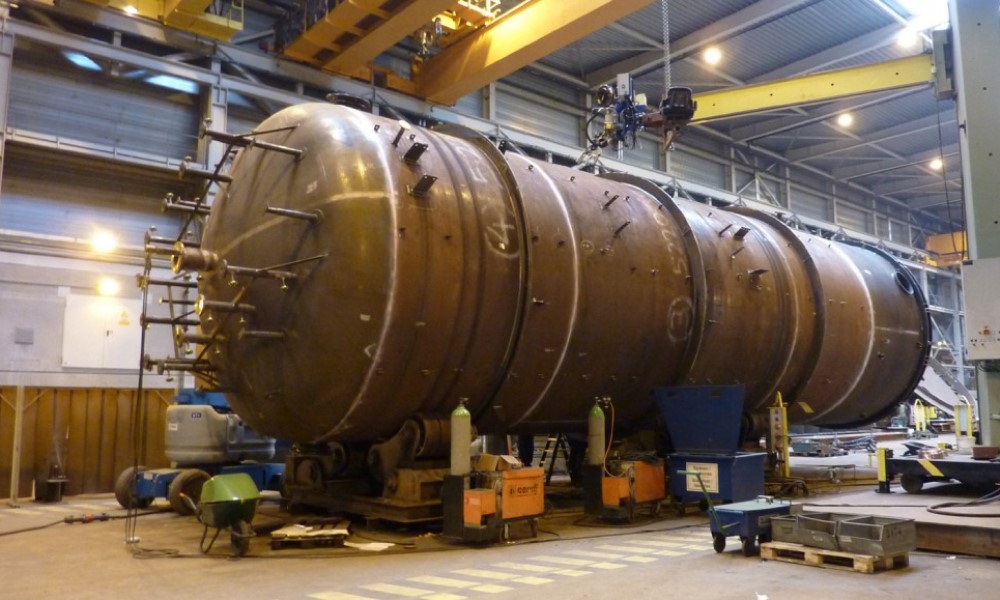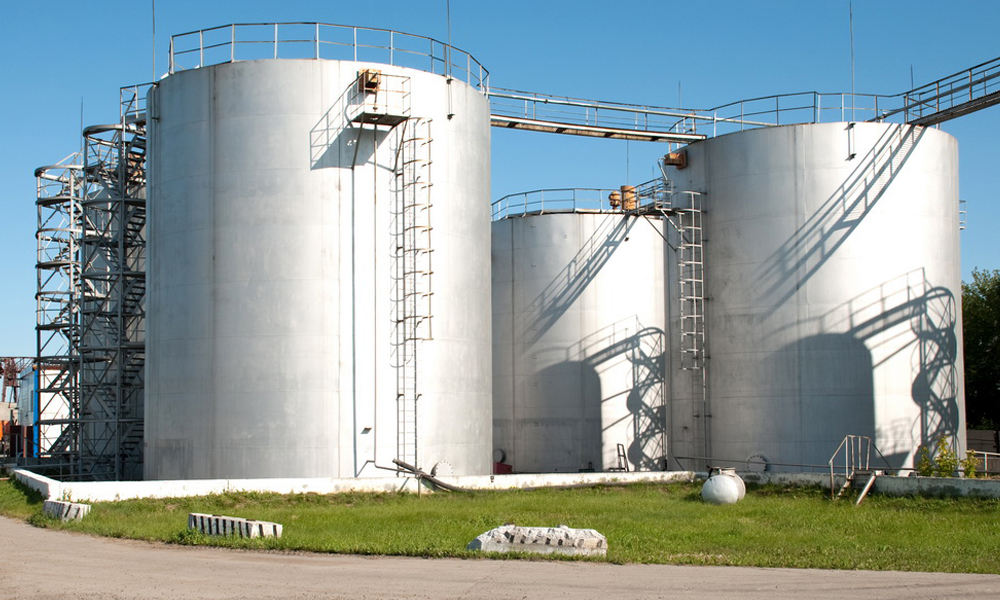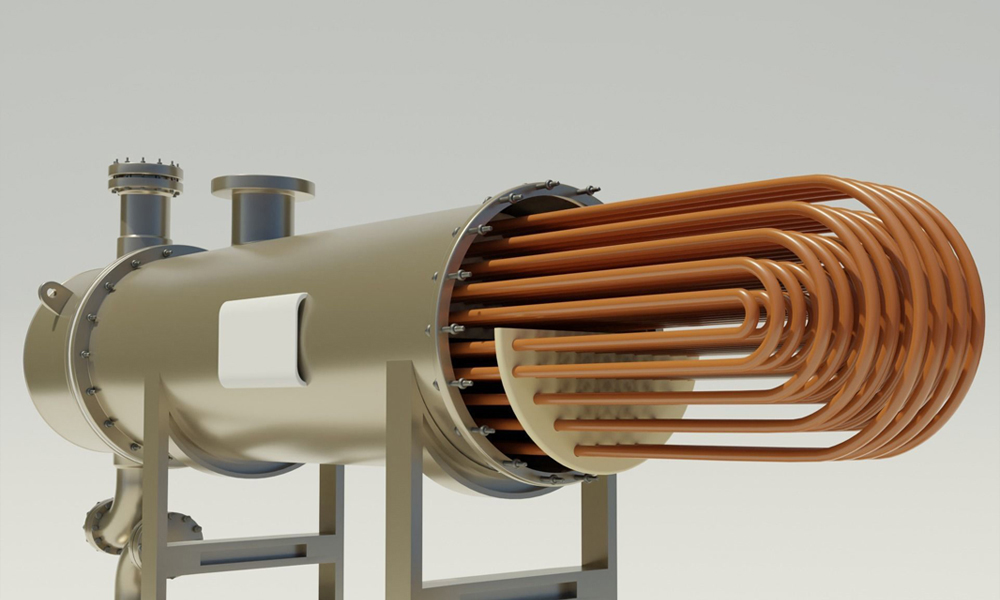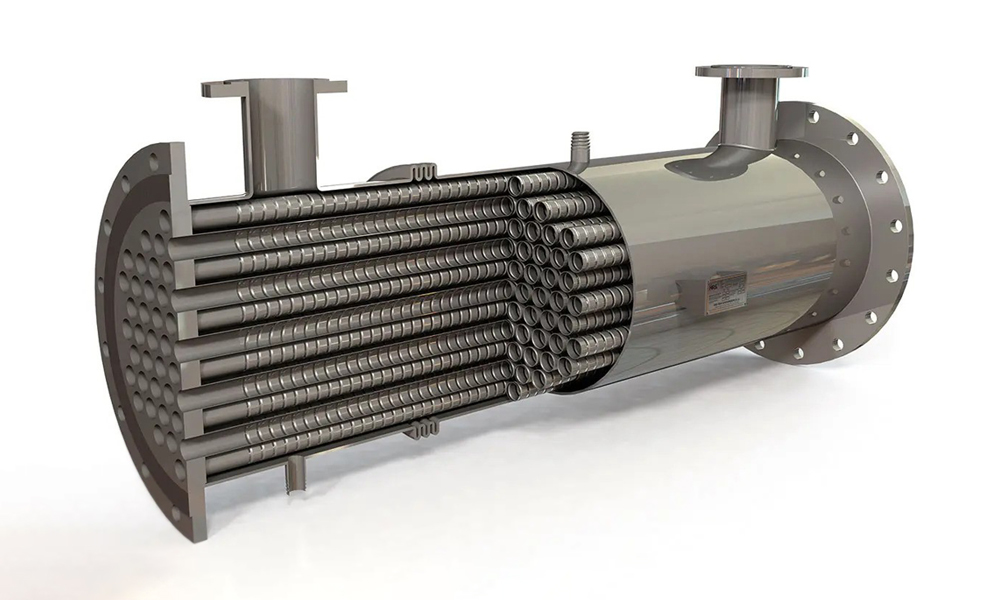In the oil, gas, and petrochemical industries, heavy and sensitive equipment form an essential part of production processes. Protecting these assets is always a top priority. Petrosazeh Beinolmelal Aram Co. (Petrosazeh), as one of the pioneers in the design and fabrication of industrial equipment, constantly emphasizes the importance of maintaining and protecting pressure vessels. These vessels, which often operate under harsh conditions, require external protective layers to resist environmental factors. Painting and external coating not only preserve the aesthetic appearance of these units but also play a vital role in enhancing their service life and operational safety.
Definition and Types of Pressure Vessels
Pressure vessels are devices designed to contain gases or liquids at pressures higher than atmospheric pressure. They are widely used in industries such as oil, gas, chemical, and pharmaceuticals, and can be constructed from carbon steel, stainless steel, or special alloys. A typical pressure vessel consists of a cylindrical or spherical shell equipped with heads and fittings capable of withstanding internal pressure.
Types of pressure vessels include horizontal, vertical, and spherical tanks, each selected according to operational requirements. For instance, spherical vessels are more suitable for storing compressed gases due to their uniform pressure distribution. Petrosazeh focuses on the quality of raw materials in manufacturing these vessels to ensure a strong foundation for the application of external coatings.
Read more: Types of pressure vessels and applications

Moreover, pressure vessels can be classified according to standards such as ASME, which specify design and manufacturing requirements. Understanding these types helps in selecting the appropriate coating, since each vessel may face different environmental challenges, such as high humidity or exposure to chemicals.
Also read: Design of pressure vessels
Role of External Coating in Corrosion Protection
The external coating of a pressure vessel serves as a protective barrier applied to the outer surface to prevent the penetration of corrosive agents. These coatings may include epoxy, polyurethane, or thermally sprayed coatings, which prevent chemical reactions between metal and environment. In industrial settings where moisture, salt, or acidic gases are present, corrosion can rapidly weaken the vessel’s structure.
Without proper coating, pressure vessels may suffer pitting corrosion, which can lead to leakage or even explosion. External coatings not only prevent corrosion but can also act as thermal insulation, mitigating sudden temperature fluctuations. Industrial experience shows that high-quality coatings can extend a vessel’s lifespan by 20 to 30 years.
In addition to chemical protection, coatings also safeguard against mechanical damage such as scratches and impacts. In Petrosazeh projects, coatings are selected based on each vessel’s specific operating conditions to deliver maximum performance.
Importance of Painting for Safety and Durability
Painting pressure vessels goes beyond aesthetics—it plays a critical role in operational safety. The paint layer prevents moisture and oxygen from reaching the metal surface, the two primary causes of corrosion. Consequently, the vessel’s durability increases while the need for frequent maintenance decreases, thus reducing operational costs.
Petrosazeh considers painting as part of its safety protocol since appropriate color codes can provide safety markings for hazardous areas. According to OSHA reports, suitable coatings can reduce fire and explosion hazards because certain paints are heat-resistant—an especially important factor in high-risk industries such as petrochemicals.
Additionally, painting can improve energy efficiency, as reflective coatings help control the vessel’s internal temperature. Case studies show that properly painted vessels exhibit a 15–20% reduction in corrosion rate, directly contributing to worker safety and environmental protection.
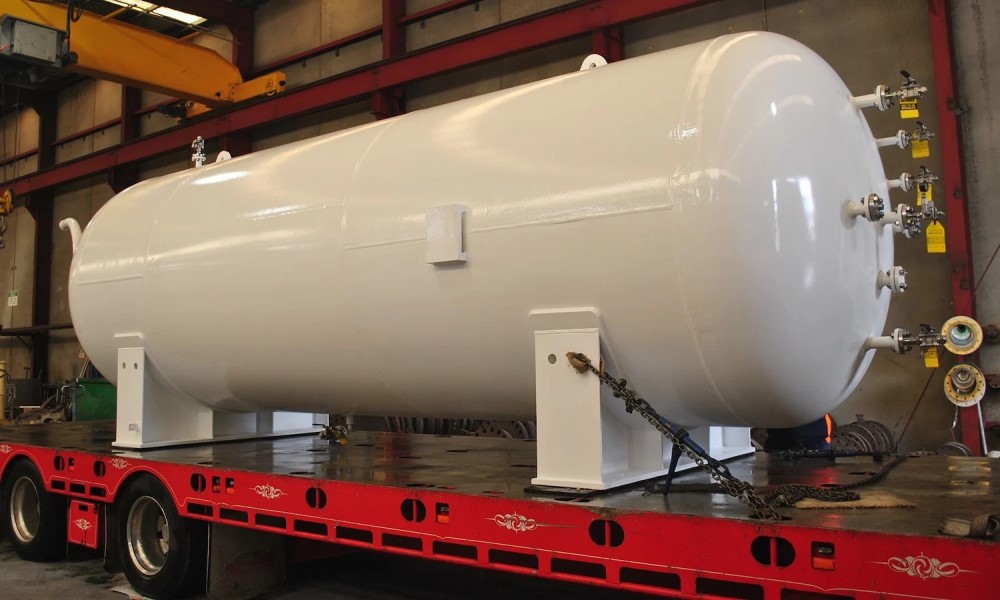
Types of External Coatings for Pressure Vessels
External coatings for pressure vessels are diverse and selected based on specific operational needs. Epoxy coatings are among the most common, providing excellent resistance to chemicals and moisture, often applied in two layers for added protection.
Fluoropolymer coatings such as PTFE or PFA are suitable for highly corrosive environments and can withstand temperatures up to 500°F (260°C).
Vinyl ester and glass-flake epoxy coatings are also popular options, designed for superior resistance to corrosion and abrasion. Compared to simple paints, these coatings offer longer durability and can perform effectively under high pressure. The choice of coating should be based on a detailed environmental risk assessment to ensure optimal performance.
Additionally, ceramic or rubber linings are used for specific applications, such as vessels containing corrosive materials. These coatings not only prevent corrosion but may also provide thermal or acoustic insulation, improving overall vessel performance.
Process of Applying External Coatings
The coating process begins with surface preparation, which involves cleaning methods such as sandblasting or chemical washing to remove contaminants, rust, or old layers. Without proper preparation, adhesion decreases and coating performance declines.
After preparation, coatings are applied by spraying, rolling, or dipping. For large vessels, thermal or electrostatic spray techniques are preferred to achieve a uniform layer.
Following application, the drying or curing stage—either natural or heat-assisted—ensures the coating’s hardness and readiness for operation. Final inspection is carried out using tools such as spark testers to detect any defects and verify coating integrity.
Post-application maintenance involves periodic inspections to detect and repair early damage, increasing protection and reducing long-term costs.
Coating Standards for Pressure Vessels
International standards such as ASME Section VIII specify requirements for the coating of pressure vessels, including pressure testing and coating verification. These standards ensure compatibility of coatings with vessel design and guarantee safety.
API 1541 and SY/T0319-2012 provide additional guidelines for coating performance in oil and gas environments. Furthermore, OSHA standards emphasize worker safety during coating operations, such as preventing inhalation hazards.
ANSI Z535.1 environmental standards define color coding for safety markings to prevent accidents.
Economic and Maintenance Benefits of Coatings
External coatings on pressure vessels offer significant economic benefits by reducing corrosion rates and minimizing repair needs. Studies indicate that initial investment in high-quality coatings can lower maintenance costs by up to 50%. Coatings also facilitate easier visual inspections, as surface damage can be identified earlier.
In addition, coatings can enhance energy efficiency by reducing unwanted heat transfer, resulting in long-term financial savings.
Also read: Maintenance and repair costs of pressure vessels post-construction

Case Studies and Practical Examples
In one petrochemical project, applying epoxy coatings on pressure vessels extended their service life from 10 to 25 years, highlighting the importance of proper coating selection. In another marine industry study, fluoropolymer coatings demonstrated strong resistance to seawater corrosion and significantly reduced repair costs.
Challenges and Solutions in Coating Applications
One challenge in coating application is adverse weather conditions, which can reduce adhesion. The solution is to use moisture-tolerant epoxy coatings. Another issue is mechanical damage during transportation. Moreover, selecting the wrong coating type can lead to premature failure. Conducting a precise operational environment assessment is the best way to overcome these challenges.
Conclusion
Ultimately, the importance of painting and external coating of pressure vessels cannot be overstated, as it directly affects safety, durability, and operational economics. Petrosazeh Beinolmelal Aram Co. provides advanced solutions to help clients protect their valuable assets. By adhering to standards and selecting the appropriate coating system, industrial challenges can be effectively mitigated and long-term reliability ensured.
References:
- Hydro-Tech.ca: The Importance of Proper Industrial Coating and Painting to Protect Your Assets
- Performance-Painting.com: Why Direct to Metal Coatings Are Important
- OSHA.gov: Painting and Other Coatings
- Bendel.com: Coating & Painting Services
- ABS Guidance Notes: Inspection, Maintenance and Application of Marine Coating Systems
- RedRiver.team: Comprehensive Guide to Surface Treatment for Pressure Vessels
- A&K Painting: 7 Benefits of Industrial Equipment Repainting & Recoating
- CCSYacht.com: Tank Coatings: An Often Forgotten Subject
- CurranIntl.com: Pressure Vessel Coating
- BuckeyeFabricating.com: How to Select the Best Steel Finish for Your Pressure Tank
- Chemcote.com.au: Pressure Vessel Protective Coatings and Refurbishment
- MetalSpraySupplies.com: Pressure Vessel Corrosion Protection
- IntegratedGlobal.com: Oil & Gas Pressure Vessel Corrosion Control
- KTA.com: High-Temperature Coatings
- BanksIndustrial.com: Internal Tank Coating and Vessel Linings Services
- DixieSouthern.com: ASME Pressure Vessel Corrosion Prevention
- Belzona.com: Process Vessels
- Sherwin-Williams.com: A Case for Criteria that Simplify Process Vessel Lining Selection

